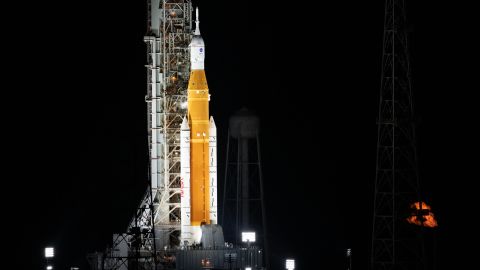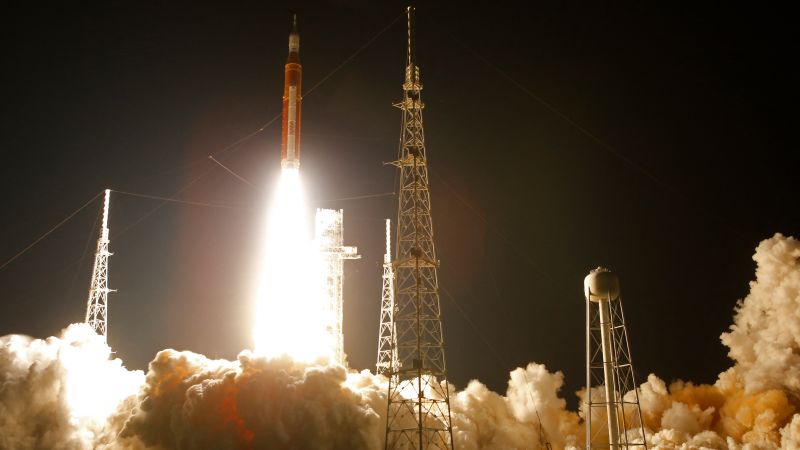Sign up for CNN’s Wonder Theory science newsletter. Explore the universe with news on fascinating discoveries, scientific advancements and more.
CNN
—
The historic Artemis I mission took flight in the early hours of Wednesday morning after months of anticipation. The milestone event kicked off a journey that will send an uncrewed spacecraft around the moon, paving the way for NASA to return astronauts to the lunar surface for the first time in half a century.
The towering, 322-foot-tall (98-meter-tall) Space Launch System, or SLS, rocket lit its engines at 1:47 a.m. ET. It emitted up to 9 million pounds (4.1 million kilograms) of thrust to haul itself off the launchpad in Florida and into the air, streaking vibrantly across the night sky.
Atop the rocket is the Orion spacecraft, a gumdrop-shaped capsule that broke away from the rocket after reaching space. Orion is designed to carry humans, but its passengers for this test mission are of the inanimate variety, including some mannequins collecting vital data to help future live crews.
The SLS rocket expended millions of pounds of fuel before parts of the rocket began breaking away, and Orion is now soaring through orbit with just one large engine. That engine will emit two powerful burns over the next couple of hours to put the spacecraft on the correct trajectory toward the moon. Then, about two hours after liftoff, the rocket engine will also fall away, and Orion will be left to free-fly for the remainder of its journey.
Orion is expected to log roughly 1.3 million miles (2 million kilometers), taking a path that will lead it farther than any other spacecraft designed for human flight has traveled, according to NASA. After orbiting the moon, Orion will make its return trip, completing its journey in about 25.5 days. The capsule is then scheduled to splash down in the Pacific Ocean off the coast of San Diego on December 11, when recovery teams will be waiting nearby to haul it to safety.
Throughout the mission, NASA engineers will be keeping a close eye on the spacecraft’s performance. The team will evaluate whether Orion performs as intended and will be ready to support its first crewed mission to lunar orbit, which is currently scheduled for 2024.
This mission also marks the debut flight of the SLS rocket as the most powerful ever to reach Earth’s orbit, boasting 15% more thrust than the Saturn V rocket that powered NASA’s 20th century moon landings.

And this mission is just the first in what’s expected to be a long series of increasingly difficult Artemis missions as NASA works toward its goal of establishing a permanent outpost at the moon. Artemis II will follow a similar path as Artemis I but will have astronauts on board. Artemis III, slated for later this decade, is expected to land a woman and a person of color on the lunar surface for the first time.
Read more: The big numbers that make the Artemis I mission a monumental feat
The mission team encountered a number of setbacks in the lead-up to Wednesday morning’s launch, including technical issues with the mega moon rocket and two hurricanes that have rolled through the launch site.
Fueling the SLS rocket with superchilled liquid hydrogen proved to be one main issue that forced NASA to wave off earlier takeoff attempts, but on Tuesday, the tanks were filled despite leak issues that halted fueling hours before launch.
“On behalf of all the men and women across our great nation who have worked to bring this hardware together to make this day possible, and for the Artemis generation, this is for you,” said Charlie Blackwell-Thompson, Artemis launch director.







More News
5 Takeaways From the Supreme Court Arguments on Idaho’s Abortion Ban
NATO Puts on a Show of Force in the Shadow of Russia’s War
In Immunity Case, Trump Can Lose in Ways That Amount to a Win